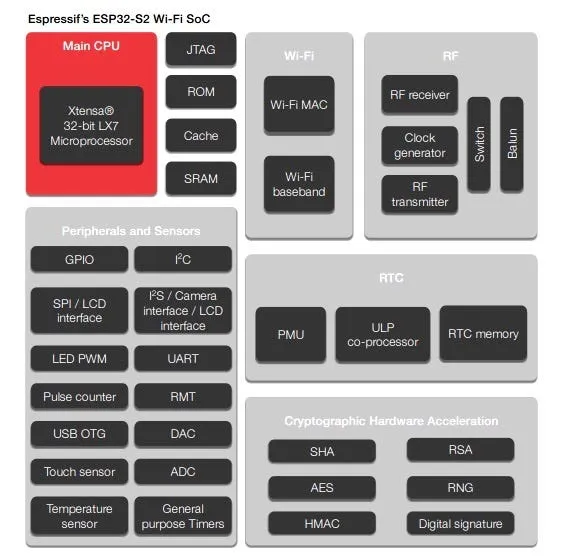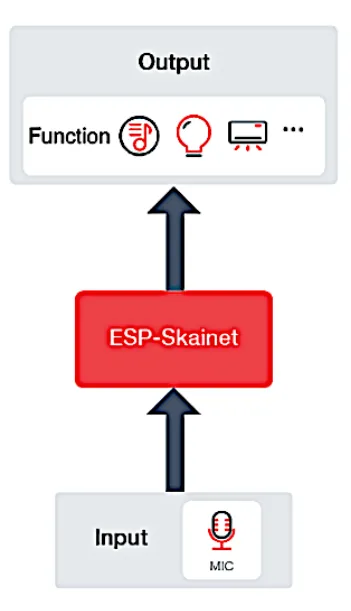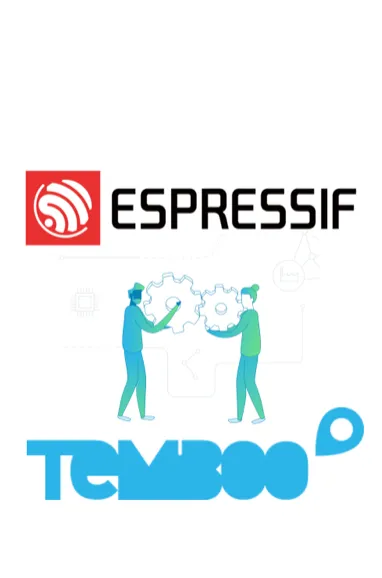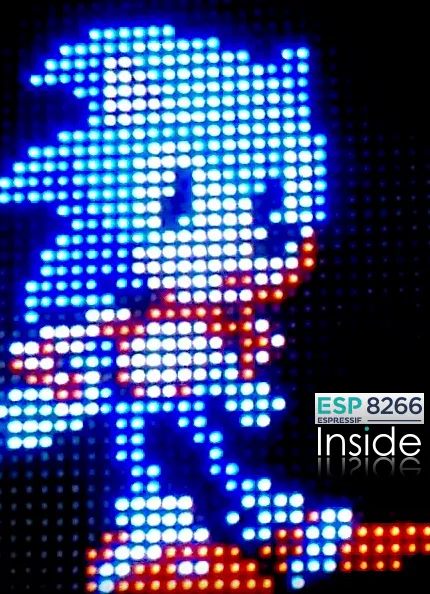
Hi everyone,
Apologies for the typo in our latest newsletter, at the beginning of which ESP32-S3 was mentioned, instead of the correct ESP32-S2 . So, it is the ESP32-S2 datasheet that has been released. You can now find it online in the documentation section of our website.
ESP32-S2 is a low-power 2.4 GHz Wi-Fi System-on-Chip (SoC) solution. With its state-of-the-art power and RF performance, this SoC is an ideal choice for a wide variety of application scenarios relating to the Internet of Things (IoT), wearable electronics and Smart Home. ESP32-S2 includes a Wi-Fi subsystem that integrates a Wi-Fi MAC, Wi-Fi radio and baseband, RF switch, RF balun, power amplifier, low noise amplifier (LNA), etc. Espressif’s new SoC is fully compliant with the IEEE 802.11b/g/n protocol and offers a complete Wi-Fi solution. At the core of this SoC is an Xtensa® 32-bit LX7 CPU that operates at a maximum of 240 MHz. The SoC supports application development, without the need for a host MCU.
The on-chip memory includes 320 KB SRAM and 128 KB ROM. It also supports a number of external SPI/QSPI/OSPI flash and SRAM chips for more memory space. With its multiple low-power modes, ESP32-S2 is designed for ultra-low-power performance. Its fine-grained clock gating, dynamic voltage and frequency scaling, as well as the adjustable output of its power amplifier contribute to an optimal trade-off between communication range, data rate and power consumption.
The device provides a rich set of peripheral interfaces, including SPI, I2S, UART, I2C, LED PWM, LCD, camera, ADC, DAC, touch sensor, temperature sensor, as well as 43 GPIOs.
It also includes a full-speed USB On-The-Go (OTG) interface which enables USB communication at all times.
ESP32-S2 has several dedicated hardware security features. Cryptographic accelerators are integrated, thus providing AES, SHA and RSA algorithms. Additional hardware security features are provided by the RNG, HMAC and Digital Signature modules, as well as flash encryption and secure boot signature verification. These characteristics allow the device to meet stringent security requirements.
Other news you can read in this month’s newsletter include:
- Espressif’s new Smart Voice Assistant, which supports voice wake-up and multiple offline speech-recognition commands;
- Cesanta’s support for ESP32 and ESP8266 on the mDash Cloud platform, which generally aims to accelerate the Web for the Internet of Things;
- Espressif’s new partnership with Temboo, which is meant to give IoT developers the opportunity to research, design and build the next generation of connected products with access to sensor data;
- Ryan Bates’s animated pixel art with ESP8266.
Hope you enjoy reading this month’s newsletter. Keep sending us your messages and requests on Facebook, Twitter, LinkedIn, Instagram and YouTube. We respond to all of your messages as quickly as possible!
Best wishes,John Lee.
Senior Customer Support Officer
Espressif’s New Smart Voice Assistant, ESP-Skainet, Released#

ESP-Skainet is a new voice-interaction development framework based on Espressif’s flagship chip, ESP32. The new development framework supports voice wake-up and multiple offline speech-recognition commands. With ESP-Skainet, users can easily build applications based on wake-word detection and speech-recognition commands.
ESP32 and ESP8266 Supported by Cesanta’s mDash Cloud Platform#

Cesanta, an IoT company based in Dublin, Ireland, has recently launched mDash, which is an IoT Cloud platform for the administration of various IoT modules. This platform now supports Espressif’s SoCs, ESP32 and ESP8266, among other chips, offering a number of features that significantly facilitate building IoT applications
Espressif and Temboo Partner to Empower Everyone to Benefit from the Internet of Things#

The new partnership between Espressif Systems and Temboo is meant to give IoT developers the opportunity to research, design and build the next generation of connected products with access to sensor data. This will further bridge the gap between the physical and the digital world by using the Internet of Things more effectively.
Animated Pixel Art with ESP8266#

If you are a maker and also into pixel-art renditions of iconic video-game characters, then this article is for you! It’s time to unleash your creativity by making your own animated pixel-frame depicting your favorite character. All you need is an ESP8266 and Ryan Bates’s tutorial.
Originally published at https://mailchi.mp.


